World War II Museum of the Living Historical Memory
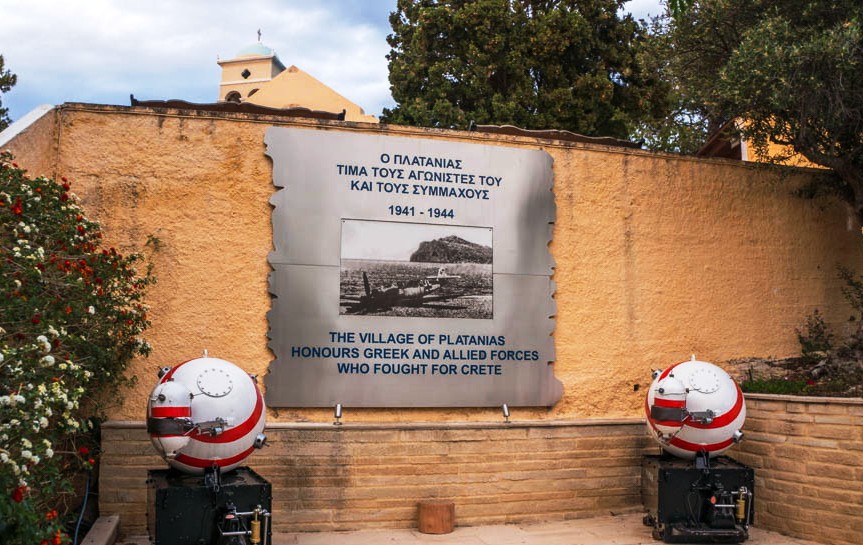

A small museum dedicated to the memorable events in Crete during the Second World War (War Shelter of Platanias) is located in the village of Platanias. This is a museum of memory that is worth a visit to learn about the life and heroic resistance of local residents during the German occupation. The museum, a military bomb shelter, houses exhibits from the time of the German occupation and important photographs of the war in Crete. One of the tourists wrote in his review of the museum: “Here you can and should learn a reverent attitude to the history of the island.”
Museum coordinates on Google map: 35.514153, 23.912140
The bomb shelter was built by German troops in 1942. It is an underground complex of tunnels and bunkers that were used to store ammunition and weapons. All of them are in good condition.
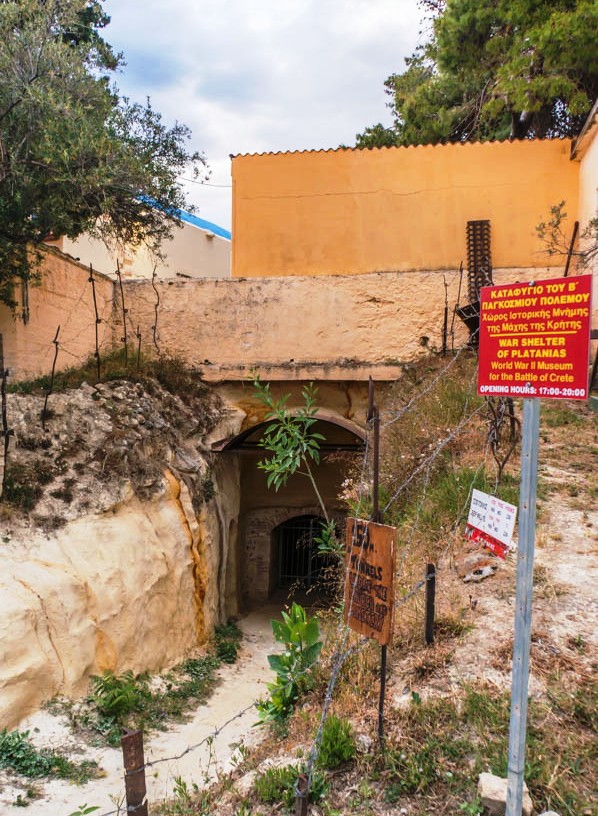
During the occupation of Crete, the Germans placed here infantry and artillery, due to the strategic location of the village of Platanias or rather of the hill on which the Church of St. Dmitry (Agios Dimitrios) is located from where opened an excellent view over many kilometers of the northern coast of West Crete. Officers lodged in the best houses of the village. There were built barracks and camps for soldiers. To store ammunition, the Germans decided to build a special warehouse—a bomb shelter in the hill directly under the Church of St. Dmitry, which they did not destroy. The hill rock composed of soft limestone was ideal for the rapid construction of tunnels by requisitioned local workers. Tunnel galleries have a length of 400 feet. Inside there are also 10 “blind” bunkers and two exits that were connected outside with trenches. The Germans chose the place for the construction of tunnels under the church not by chance. It was a cold calculation: it would hardly have occurred to anyone to bomb an old church, clearly visible from the air.
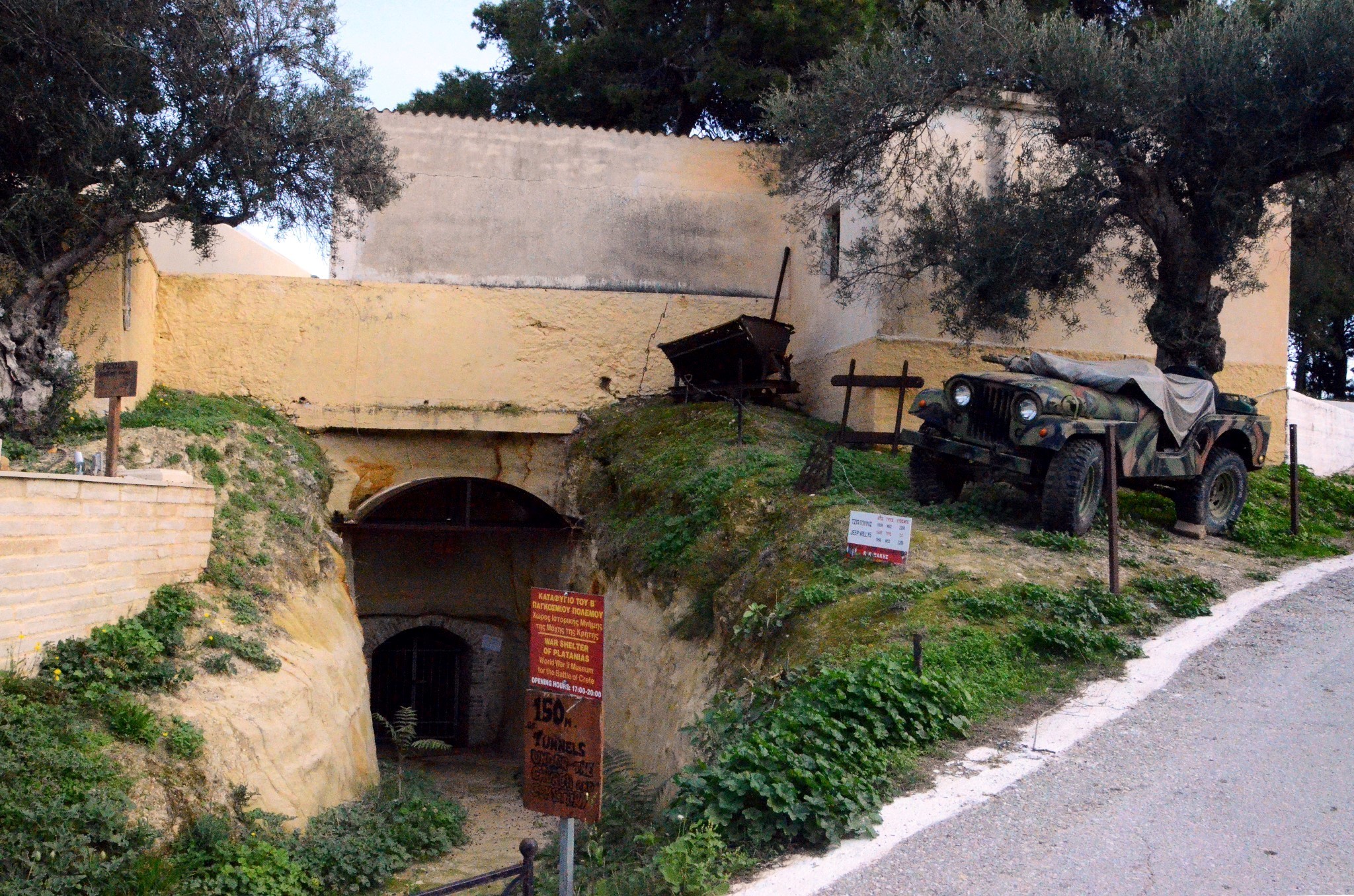
“Sacred” Olive Tree
Near the entrance to the museum there is a centuries-old olive tree with a sign explaining that it was this olive that saved the village of Platanias from destruction.
During the airborne invasion aimed to capture Crete, local residents picked up a wounded German pilot and transported to the village. He died from his severe injuries. Fearing reprisals from the Germans, he was not buried at the local cemetery, but in a simple grave near the Church of St. Dmitry, under an old olive tree. It was this place that was initially chosen by the Germans for the construction of tunnels. However, one of the local residents, Mikhail Stamatakis, didn’t get in trouble and told the Germans that the entrance to the tunnel should be moved a few meters away from the olive tree, since it is sacred, its oil is used in religious ceremonies and should not be touched. The Germans agreed on that. This old olive tree and the intelligence of that local resident rescued the village from a possible retaliation by Germans.
Near Platanias is the village of Kondomari. It is notorious for the fact that here the Wehrmacht used the mass execution of male civilians for the first time in Crete on June 2, 1941, in revenge for the participation of the Cretans in the battles against German paratroopers during the capture of the island. This execution was the first of its kind in occupied Europe.
Platanias
Platanias is a modern resort village with a well-developed tourist infrastructure located 6 mi west of Chania, on the shores of Chania Bay, on the old Chania-Kissamos national road between the villages of Agia Marina and Maleme. For the first time, Platanias was mentioned in 1577: a tower of Platanias (Πλατανέα). The local population is very small: about a thousand people.
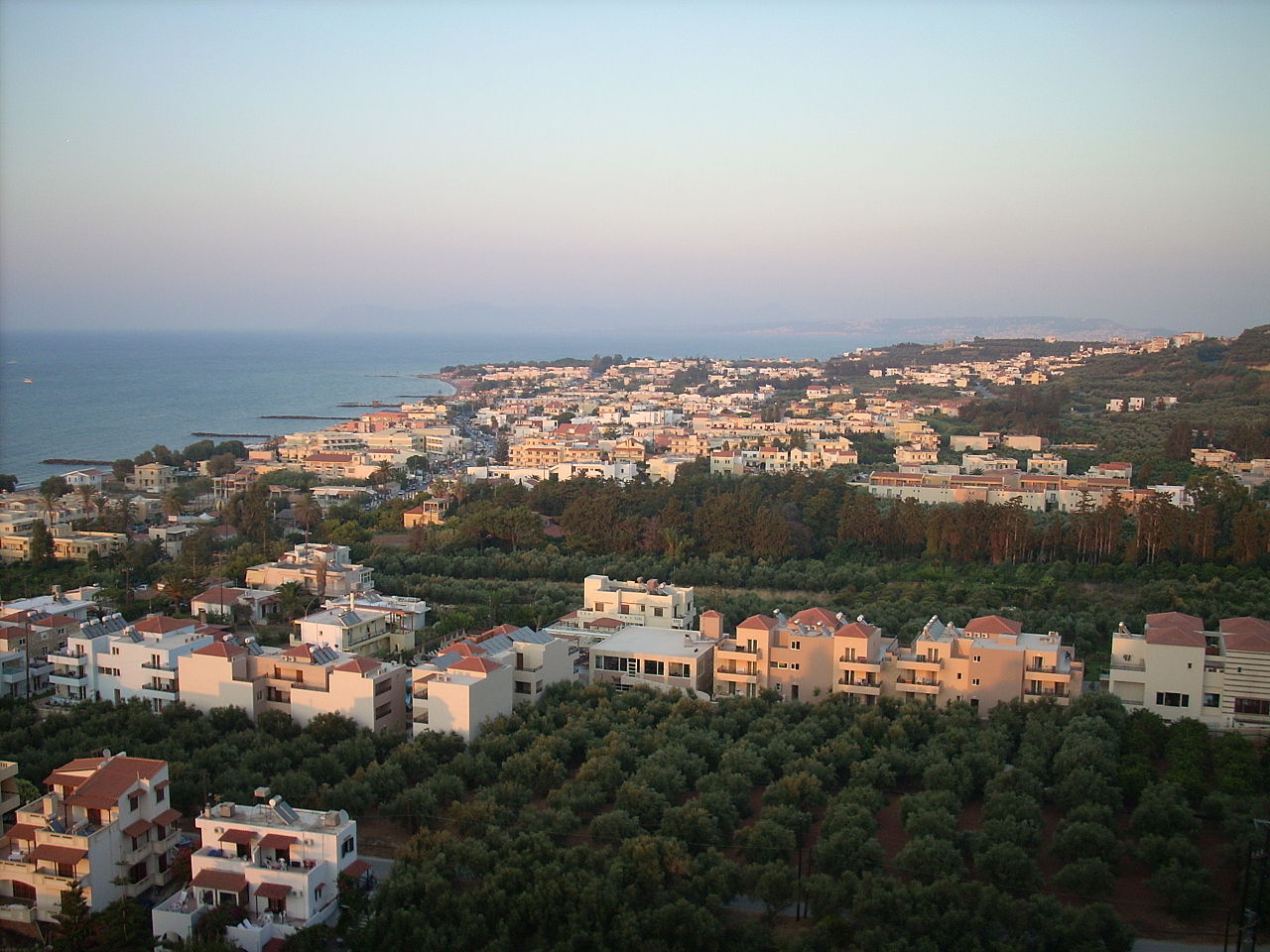
Now this village is equal to Malia or Hersonissos and attractive for lovers of entertainment, and noisy nightlife. This is a small kingdom of clubs, dance discos and bars with strong drinks. For other vacationers, Platanias is associated with a wide sandy 2,5 mi long beach, along which there are restaurants, taverns, shops and souvenir vendors. Many times the beach has been awarded the Blue Flag of Europe for its exceptional cleanliness. Additionally Platanias is a center of water entertainment in the Chania region; and pleasure boats depart from the local pier, on which you can explore the coastline, go to the island of St. Theodorou and to Chania.
According to legend, the island of St. Theodorou appeared thanks to Poseidon, who turned a huge monster into this island. In the XVI century, two small fortresses were built here. One of them was erected on the highest place of the island and was called “San Theodoro”, and just below was built the fortress of St. Franciscus. The island was captured by the Turks in 1645. The Venetian garrison of 70 people defended fiercely. The Turks were able to land on the island only after they blew up the powder cellar along with the fortress. Now the fortresses lay ruined.
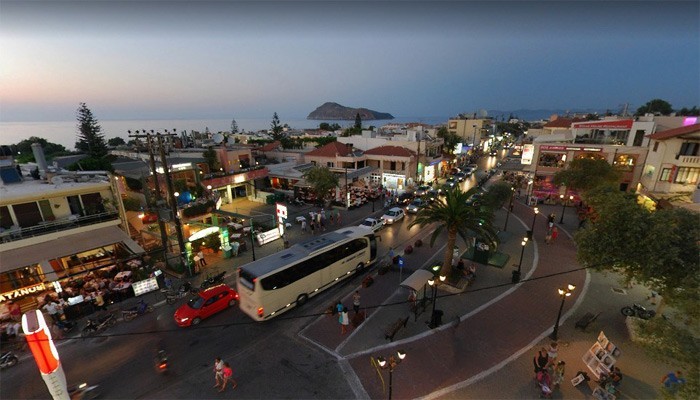
The island is considered a natural reserve for the Kri-Kri wild goats, which are grown here. The island’s Kri-Kri population is used to replenish zoos throughout Europe with these animals. You can view the island and its inhabitants from a pleasure boat, because it is forbidden to land in the reserve.
What else can you see in Platanias? For tourists could be of interest:
– Museum of Cultural Heritage—Folklore Museum of Agia Marina (Google coordinates: 35.515328, 23.928037) with a collection of relics of old Cretan life, a collection of household utensils, tableware, furniture, weapons and jewelry;
– Greek Orthodox Church Ekklisia Agios Spiridon (35.514941, 23.927261);
– Greek Orthodox Chapel Agia Marina (35.519294, 23.925076)
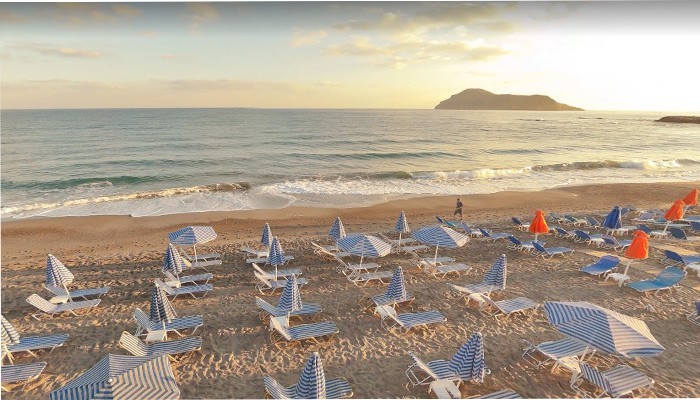
Platanias is a village of contrasts. One day, you can relax here in a bar in the coastal zone, and on another you may be hardly hide from the hustle and bustle in the narrow streets of Pano (Upper) Platanias. You can also travel by car south of the village through the famous orange groves, enjoying the magnificent mountain scenery. All this makes Platanias one of the most popular and beautiful places on the island of Crete.
March 2020